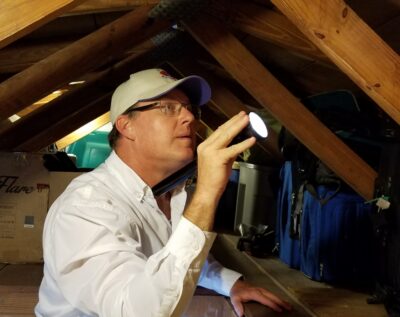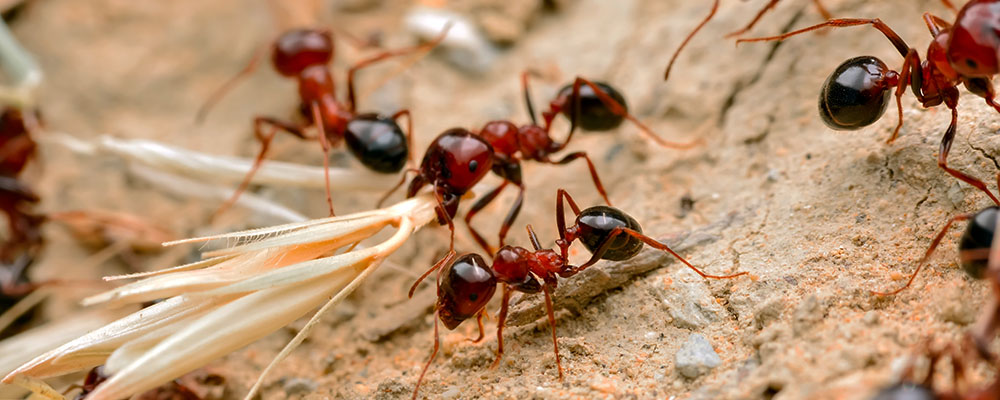
Fire Ants: The Scourge of the South
Of all the ants one might encounter in Florida, the fire ant is potentially the most dangerous. It’s an invasive species imported accidentally when a cargo shipment from Brazil unloaded the first fire ants at the port of Mobile, Alabama in the 1930s. The south has never been the same since.
With no natural predators in the U.S. and a proclivity for sunny climes and flat dry land, the fire ant spread quickly and thrives throughout Florida. Fields, parks and lawns can be dotted with mounds that easily host 250,000 of these aggressive little ants.
Fire Ant Mounds
Fire ants build visible soil mounds that look like fluffy, worked soil often appearing shortly after a drenching rain. Left undisturbed they can grow to almost 20 inches high. In lawns and other kept turf, the mounds stay closer to the ground. However high the mound, the nest below can extend through tunnels 25 feet in diameter and deep below the surface where the ants can survive severe weather and temps in a regulated environment. If caught in a flood, fire ants can float by clinging together in a mass — a particularly frightening thought for humans caught in the same flood.
Another thing you will notice about a fire ant mound is that there is no hole at the cone of the mound. The worker ants come and go from tunnels below. In fact, the mounds usually aren’t conical; they sprawl out or pile up unevenly.
Each colony can host multiple queens laying up to 800 eggs a day. That’s 11-17K new worker ants every 2 to 3 weeks! Undetected or untreated, these colonies can multiply and expand pretty easily.
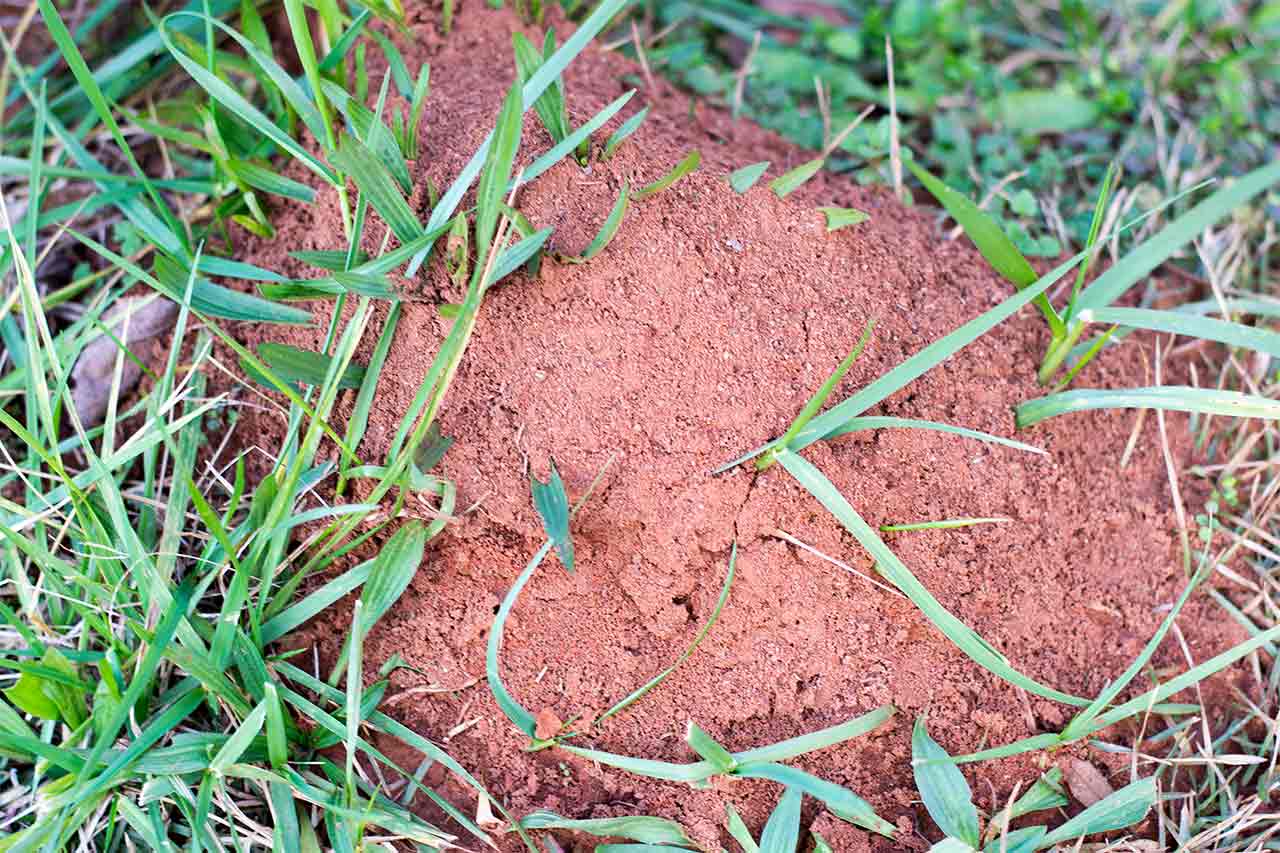
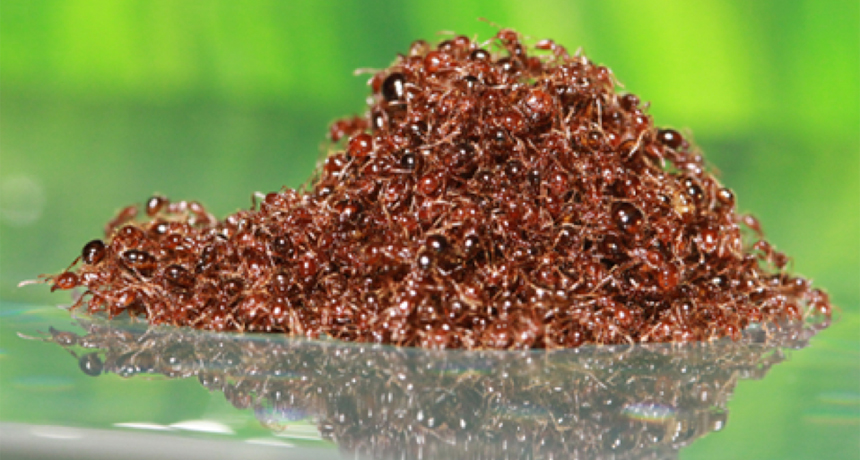
What Fire Ants Look Like and How They Behave
Fire ants are small, varying in size from 1/8″ to 1/4″ long, with reddish-brown to reddish black bodies. They are least active during the heat of the day, but they also avoid darkness and shade. They love open fields and forests.
If you disturb their mound, hundreds of ants will run up vertical surfaces like blades of grass, tree trunks or even your legs! That is a distinguishing characteristic as few native ants will attempt vertical surfaces with such fervor.

The Famous Fire Ant “bite” or sting
Fire ants do bite, but the bite is not what really hurts. The worker ants will bite its victim with its mandibles (really strong jaws) to latch on. Then it injects its alkaloid venom with an abdominal stinger (like a wasp or a bee). Even worse, while holding on with its mandibles, the fire ant pivots stinging repeatedly until it is dislodged or killed.
After the initial burning sensation, that alkaloid venom forms a pustule or blister filled with white fluid at the reddened sting site. No other ant produces this result.
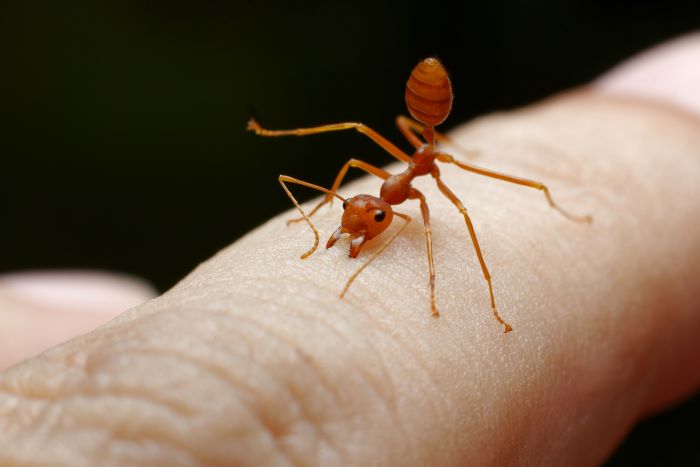
What to Do?
There are many risks to trying to deal with fire ants on your own. The safer bet is to call in professionals who use the proper protections and treatments to eliminate the mounds completely. There are two proven methods for eliminating fire ant colonies: baiting and mound drenches.
Baiting to Remove Fire Ant Populations
Spreading the proper bait over infested areas is one effective way of eliminating fire ants. Although it can take about three weeks to see the complete results, we are able to address the issue across a broader expanse of property and kill off the queen as well as working colony populations.
This works when actively foraging fire ants collect and bring the bait home. Heavy rain or dew will, however, weaken the bait so this is more effective in dry seasons.
Drenching Individual Fire Ant Mounds
The fastest method to eliminate fire ants is to drench individual mounds with the right chemicals. It is important to keep environmental considerations in mind and take precautionary measures to minimize the risk of close contact.

TESTIMONIALS
“Unfortunately we had fleas all over our new house ,brought in by a dog we babysat.? I immediately called Heath Pest Control (who was already my pest guy) to schedule an emergency appointment, to which he clearly explained to me my options with his company, but also my options of trying to deal with it myself. And through his guidance and information, I was able to rid my house of fleas on my own. It was very refreshing to have someone honest just trying to help me, instead of just trying to make money off of me. I will always use Heath Pest Control, And will always recommend them to my friends and family.” (Amanda Robinson)
